As usual, a customer query results in a caseSTUDY where we make a servo recommendation. This time, it regards Pilot RC's drop dead gorgeous 103" wingspan Extra NG.
This ultra-lightweight 33% aircraft isn't a toy, it's a tool. Or put another way, a weapon because as surely as a warrior wielding a katana uses it to filet his enemy, this Extra NG in the right hands is capable of awesome XA maneuvers.
But here's the thing, while it's created for an incredible experience when powered by a DA120, it's so well mannered it's actually suitable for pilots of *all* skill levels. This is what makes it a Pilot model. How do I know?
Simple, it's because I own a 2m Pilot RC Sbach model. This means I *know* what the Pilot RC brand represents and because of it, this 2.6m aircraft reached out and grabbed me by the feels (by this, meaning it feels like I want one of these sweethearts for myself).
Anyway, based on his question, I realized the right approach in terms of servos for him wouldn't suit me, and the right servos for me (to a certainty) wouldn't suit him. Why not? Simple, it's because we're all different in terms of the skill level we bring to the game, and beyond that, what our heart's desires demand we try to fly maneuver-wise.
So let's take a few minutes to discuss how you select the right servos for *yourself* based on how you fly. Reason this matters is because your wallet is at stake. What? Yup, depending on if you're a lover, a fighter, or something in between you're gonna pay . . . a little, a lot, or something in between!
Like I could install our most wicked fast servos, the ones suitable for a 3D-god, but because of how I fly, I simply couldn't tell the difference - not if my soul depended on it - except in my wallet. This, because they cost 3X as much as servos that would make me perfectly happy for how I fly.
Take my meaning? I'm just not a good enough pilot to tell the difference servo-wise between them. And yeah, I know what you're thinking . . . in your wallet, don't you own the company? Well, yes, but owning the company and 'inventory for my personal use' are two different things!
There's good reason they watch me like a hawk whenever I'm in the warehouse. It's because 'John' thinks, 'I own the place, I can take whatever I want', and in truth I can *if* I pay for it. Means yes, I can take anything I want, but only as long as I sign a chit so accounting can bill me because I get billed just like you would.
So because I'm actually paying for servos for my own models, I don't take the fastest, most powerful, and expensive. Instead, I take what I know will do the job based on my skill set because servos suitable for me cost about 1/3 what servos to suit the 2nd coming of Jason Dussia go for, capisce?
So which are the right servos for you? As usual, it depends! Let's jump into his question.

Q. Building my first 120cc aircraft. I've bought a 103" Pilot RC NG. Looking for a servo recommendation for this plane that can take the abuse of XA style maneuvers, without developing gear slop after a month.
A. Before I can answer, I need to know how you fly, what engine you intend to use, and the kinds of maneuvers you already perform, and where you're headed. Basically, I need to get a feel for where you are on the arc of development and your goals. So tell me a little bit about yourself and I'll try my best to help guide you.
He responded with . . . I plan on using a DLE120. And as far as flying style goes, it’ll probably be lighter 3D like rolling harriers, rolling circles, rolling loops, and maybe blenders. Crankshafts, knife edge walls, mountain tops, rifles rolls etc will be later on when my flying gets better.
And just like that, I had a better picture and began putting together my recommendation. Then it occurred to me, what if I buy one of these things? And what if he'd said he was the 2nd coming? Different servos for three different customers.
So what follows are three recommendations, instead of one. The one for my customer, a mid-level 3D pilot, ones for a duffer like me, a sport pilot who just loves how these models look and fly but couldn't perform a harrier roll on a bet, and servos suitable for the real thing, someone who can challenge the best pilots in the world.

Servos for the sport pilot
This model uses two servos per aileron, one each on the two elevator surfaces, plus one each for rudder and throttle. A sport pilot who likes the looks of these things *but* is a realist about his skills *and* doesn't want to put a torch to wallet can get by easily with . . .
- DS360DLHV times 6 (4X for ailerons and 2X for elevators)
- DS505BLHV for the rudder if he performs knife edge loops, otherwise another DS360DLHV
- DS90DLHV on throttle
Yup, with just $430 worth of servos, he'll be able to take his 33% Extra NG and use it to fly inverted, perform loops, rolls, stall turns, Immelmans, split-S, and humptybump turnarounds, plus Cuban 8s, Lomcovák, snap rolls and slow rolls, and basically just fart around the sky having a blast.
How can this possibly be? Simple, it's because these maneuvers don't require a ton of speed so the 0.14sec/60° you get from this servo is plenty fast enough. That, and the DL-series servos feature very rugged construction with all-steel gears to hold up really well. This means the servos will give him great bang for the buck because they'll last the pilot a good long time.
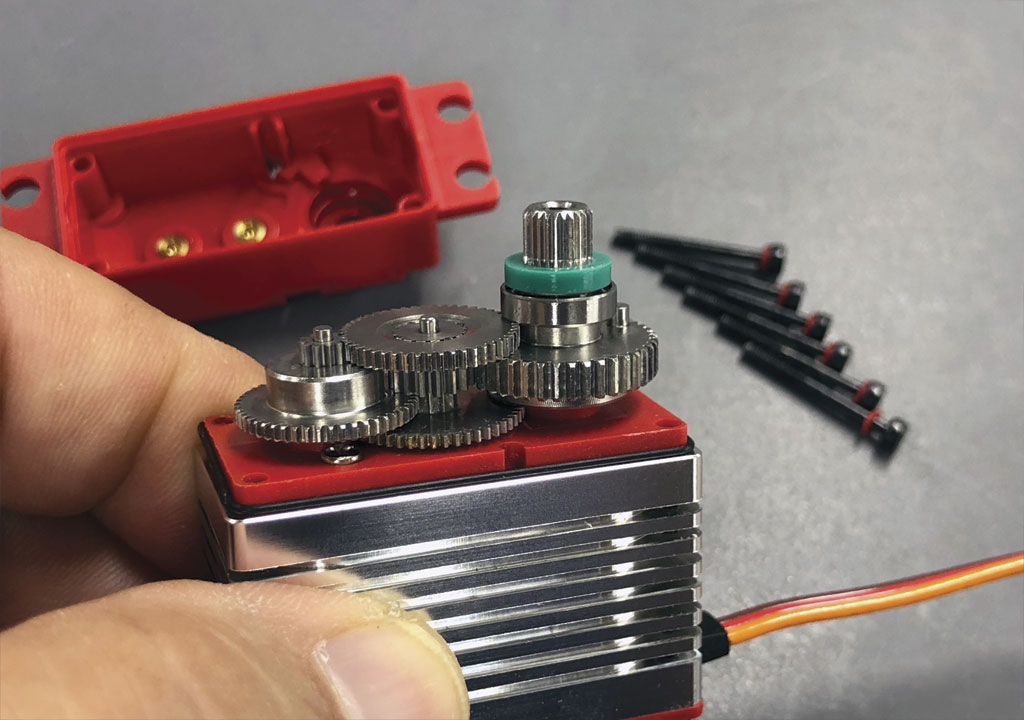
- DL-series servos have all-steel gear trains for long lasting performance
Part of what makes the ProModeler DS360DLHV such a solid alternative is that unlike hobby-grade servos, it's built to meet military standards (and subjected to these tests).
MIL-STD-810G-Part 16
- Shock - Test Method 516.6
- Vibration - Test Method 514.6
- Rain - Test Method 514.5
And it won't torch your wallet because we use a super reliable iron-pole motor, no, they're not particularly fast, but *are* well suited for purpose. That, and we help save you money by using a case featuring hybrid construction (glass filled nylon and aluminum) versus an all-alloy construction, which is better but also a lot more costly. Learn more about motors with this where we cut some apart using a lathe and photograph the inside to show you what's what.
Moreover, we don't short change you in any regard because the internals include bronze hardpoints for durability, and 13 o-rings for sealing your servo from the hazards of the environment. Plus we button it up with Allen head machine-thread bolts instead of el cheapo Phillips head screws.
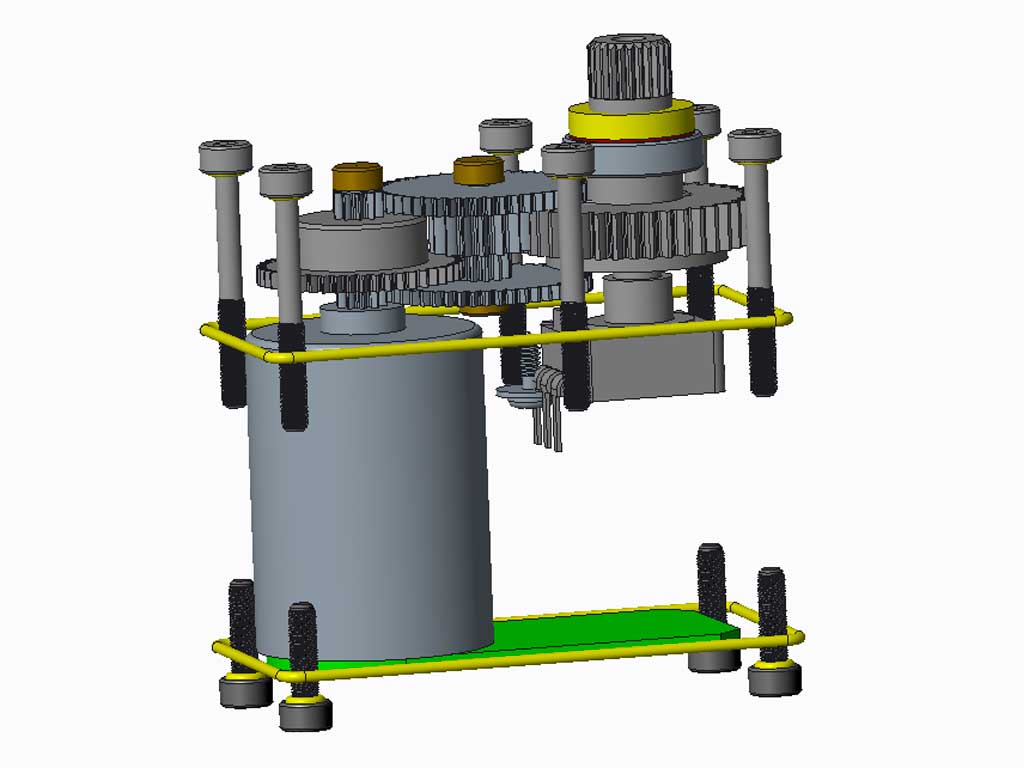
- As this render shows, yellow are the o-rings, and the bronze bits are hardpoints

Servos for the IMAC and mid-range 3D pilot
The IMAC pilot is typically more concerned with smoothness than trying to rip the wings off the model. That, and when he performs 3D maneuvers, they have a certain element of style and grace.
For a perfect example, take maneuvers the customer mentioned flying, which included rolling Harriers, rolling circles, Blenders (rolls whilst going straight down vertically, into a snap, release and exit). The maneuver looks great but because it's a variation on a snap roll it isn't especially difficult, it's a matter of timing. Those, plus torque rolls and what you get are maneuvers where forward airspeed isn't off the charts. So for this pilot, our recommendation is a bit more nuanced;
These servos are more powerful, and faster, feature all alloy cases, brushless motors, all-steel gears as well, and thus are simply more costly. Do the math and this model will require $850 in the way of servos, or about twice what a sport pilot would need to spend. For this, he gets servos with uncompromising performance and build quality. How good are they?
To show you, I'll refer you to an article titled, On rebuilding damaged DS505s where the photos show a coupe of badly damaged servos, which a customer returned for repair following an accident.
So why on Earth would I show you such a thing? It's because competitors don't show you what you get inside. Instead, they make like life will be all honey and unicorn farts if you just buy their servos because they're pretty on the outside. We contend it doesn't matter what the servo looks like on the outside, the only thing that matters is what's inside. That's what counts and we show you.
So make a few minutes in your schedule to see how the DS505BLHV are made, take note the DS630 and DS930 are similar, and go from there before deciding. These servos are significantly faster and pilots are generally quite satisfied with them in this class of model.
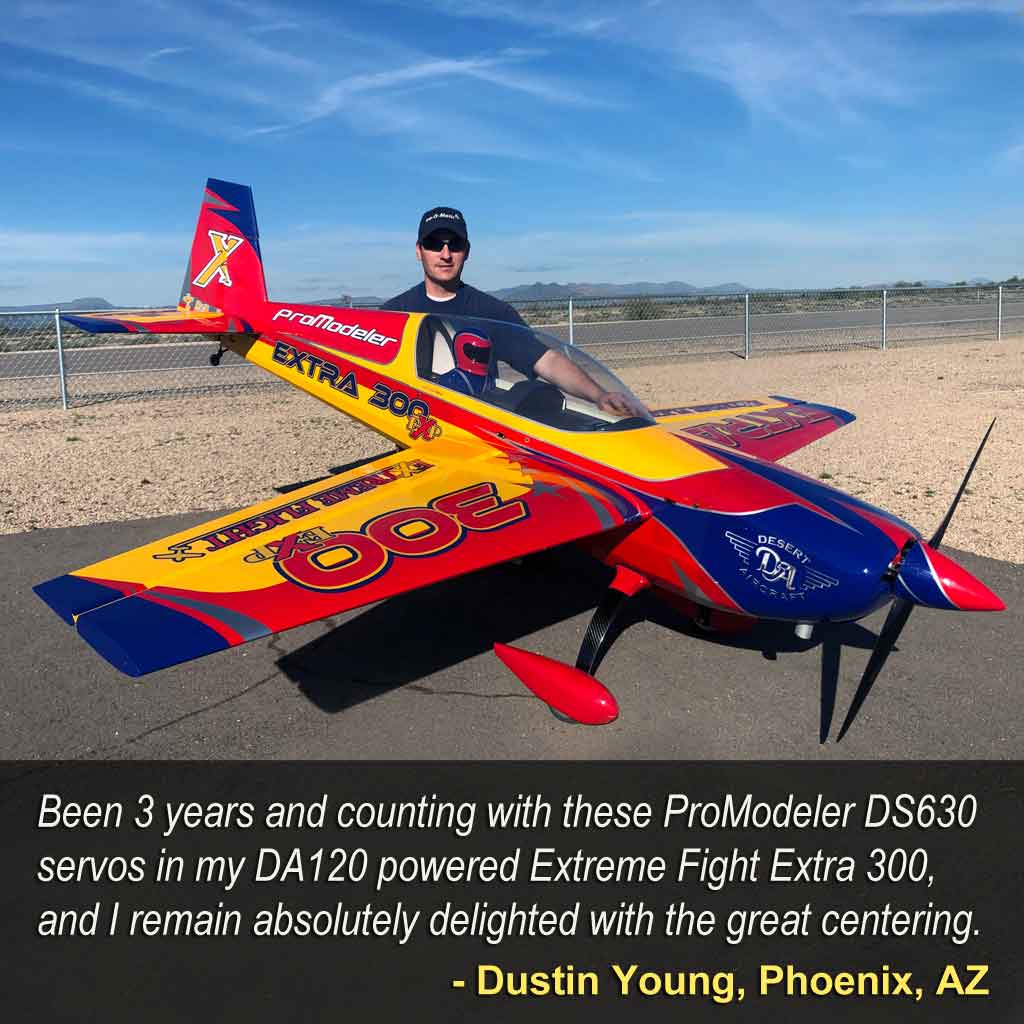

Servos for the 2nd coming of Jase Dussia
The serious XA pilot could care less about smooth. Instead, he flies the aircraft like he stole it, and looks to be trying to break the airplane in the air. Maneuvers he'll perform include all the above plus rifle rolls, and the wall. These (rifle rolls) involve high speed (as fast as it'll go) *and* then shoving humongous ailerons out in the breeze, which does two things. First, it causes a huge spike in current draw - like through the roof, and second, makes the model roll until it's almost a blur. This is a level of violence that can destroy models - I'm not shitting you.
These are also maneuvers the customer mentioned wanting to perform, as in not yet, but maybe soon. But here's the thing, what a customer says and does are two different things. So my best advice is to listen to the bard, Shakespeare himself when he wrote . . .
--- To thine own self be true ---
. . . from which I take this to mean, don't fool yourself. Look, you can spend a butt load on servos capable of performing rifle rolls (because they take both immense torque and speed, and cost it), or you can be more reasonable in your expectations. But only *you* know what you really need. My best advice? Don't buy to impress the peanut gallery, buy to satisfy your needs.
Remember, I don't know the customer, or you. Not really. He's a voice on the phone or an email telling me what he wants. So I have to take him at face value - but - I'm always mindful of one thing above all, he also could just be a bullshitter with a fat wallet. Like who am I to say?
Servos for this pilot are our series-2 (BL2) and a series-0 (BLS0) so we have another mixed lot;
Why series2 instead of series-1 on the flight controls? Simple, they're far more rugged and they're fast as a raped ape. That, and the pilot performing Harrier rolls and Walls wants both in one. How much will this pilot spend? A cool $1100 on his servos, or roughly 3X as much as a sport pilot. Hot rodders have a saying . . . speed costs, how fast do you wanna go? Same holds true with servos that offer blistering speed, excellent centering, and loads of torque.
All of the servos we've discussed use the same 1 million cycle Noble pot for superb centering. There's nothing better at any price. But series-2 servos (BLS2 technically), are built to a more rugged standard. Gears are bigger, bigger bearing, shafts are larger in diameter, output shaft is larger, etc.
So like the coach needing one lousy yard for a 1st down to cinch the game will send his fullback to carry the rock instead of the lighter halfback, the series-2 servos are what's called for if you're the 2nd coming XA pilot-wise.
BLS2 servos are just more beefy in order to take the abuse being imposed on them by maneuvers of such violence as top level pilots can demand. If you're really one of those, then these are the servos you want. Heck, just eyeball how one of these compares to a well regarded competitor like the Savox 2290SG Monster.
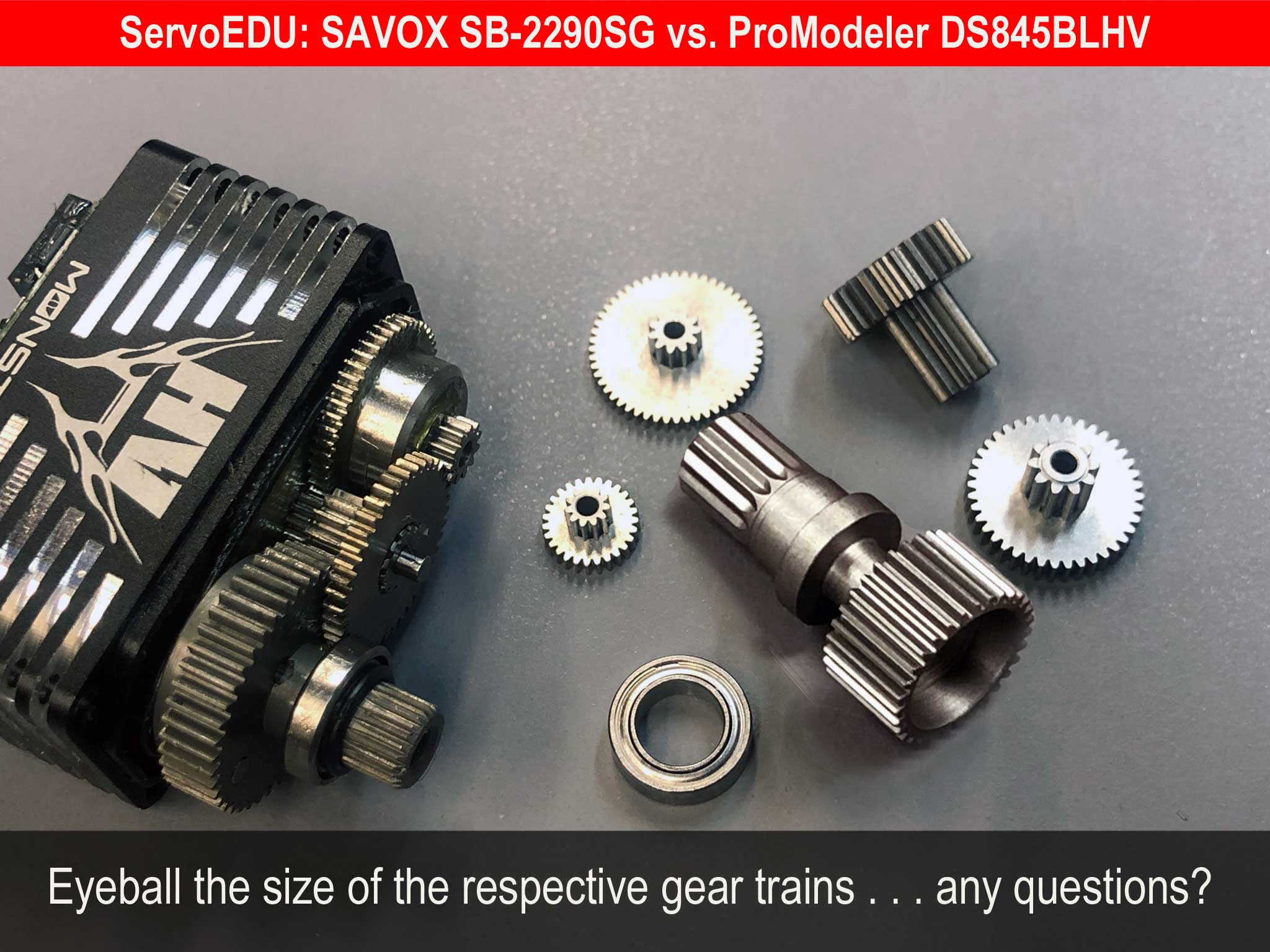
And it goes beyond this as the servo's alloy case is reinforced with bronze inserts expressly to better withstand what happens when pilots call on all the servo can deliver flight, after flight, after flight. This, as the old saying goes, is when the bullshit walks!
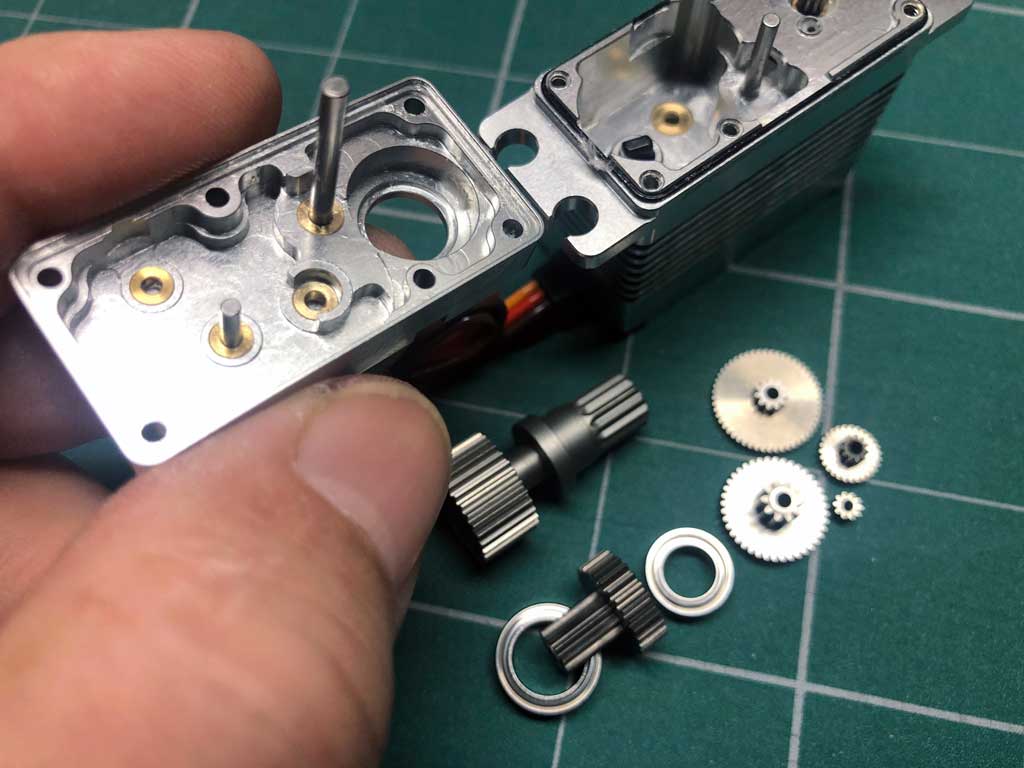
- An uncompromising level of build quality is what it takes to be our top-of-the range

So what else do you need for to complete your 33% Pilot RC Extra NG?
Extensions:
Note; these are 20AWG wire, the thickest you can buy to handle the most current with less voltage loss. Moreover, they are twisted to resist stray RF (for if your ignition module ever begins to take a crap on you). Plus, they have that super supple silicone jacketing, which resist abrasion and flexes nicely. Learn more here: Servo Leads & Extensions
Servo arms:
-- or if using BLS2 servo with 8mm spline --
Battery pack
Battery pack wise, it depends if you buy into the school of using two packs, or not. We don't engage in the fear trade and believe one pack with dual leads is all you need. What's more, with a single pack equipped with two leads you get 10A of current without heat buildup and in our experience, this is enough. Read this to learn more: Why's my pack got two JR-connectors?
Anyway, you'll find plenty of anonymous folks online telling you you need two packs with apocryphal stories of losing a model to pack failure. Us? If models were crashing left and right due to battery pack failure, then we'd have been using two battery packs since the early 1970s when I got into the sport. We didn't then, we don't need to, now. But heck, you wanna buy two packs, then KYO, because we'll take your money. Anyway, this is what we recommend for you.
- Receiver: if you're a pro, then get the B2S5000 higher voltage - enough for 4-5 flights
- Receiver: if you're a lover not a fighter, B2S6000 (LFP cells are easier to live with)
- Engine: BS2500 (we figure 1000mAh per cylinder, so this gives you a small cushion)

Wrapping it up
There's a school of thought that likes to complicate things with what I call 'box' systems. I'm an engineer and learned to keep things simple.
Learn more with this: Receiver power for 33% and 42% aircraft.
Added to which, I don't use switches unless I have no choice. Fortunately, the Pilot RC Extra NG has a nifty quick-attach for the canopy, which means you can dispense with switches altogether to expose the guts of the model in a moment. Means you can just use a pair of extensions from the receiver to connect the battery. So get 2X 20AWG 12" if you grok. When you do this, in effect, *you* become the switch as you make/break power by connecting to the extensions.
Why do I believe in doing this? Because switches are the least reliable component of the model. But hey, if you want to buy into magic switches costing $60-100, whatever. Me? I believe the best switch in the whole world is the one sitting in a drawer in your workshop. This is better by far than putting your model at risk in the event of switch failure, but once again, do whatever lets you sleep at night.
Any further questions, suggestion for this article, etc. then just reach out to me at 407-302-3361, or via email: info@promodeler.com